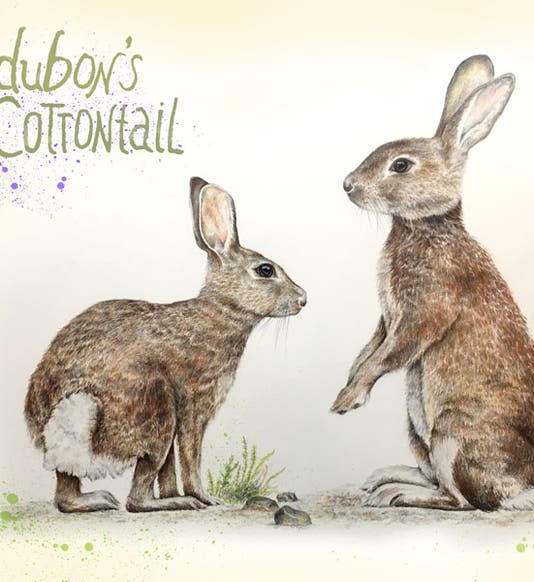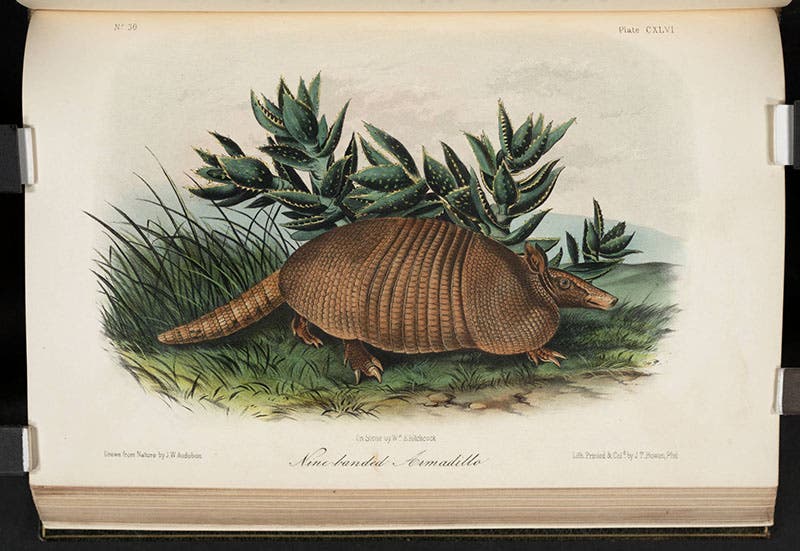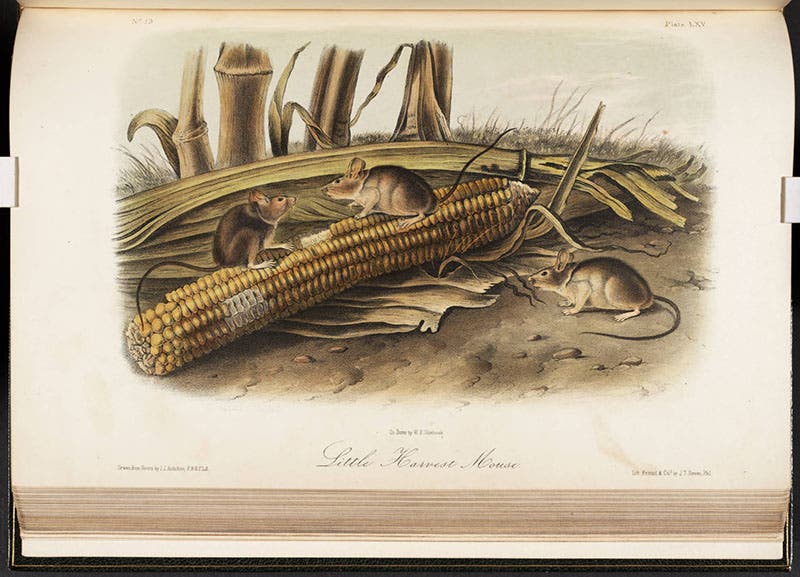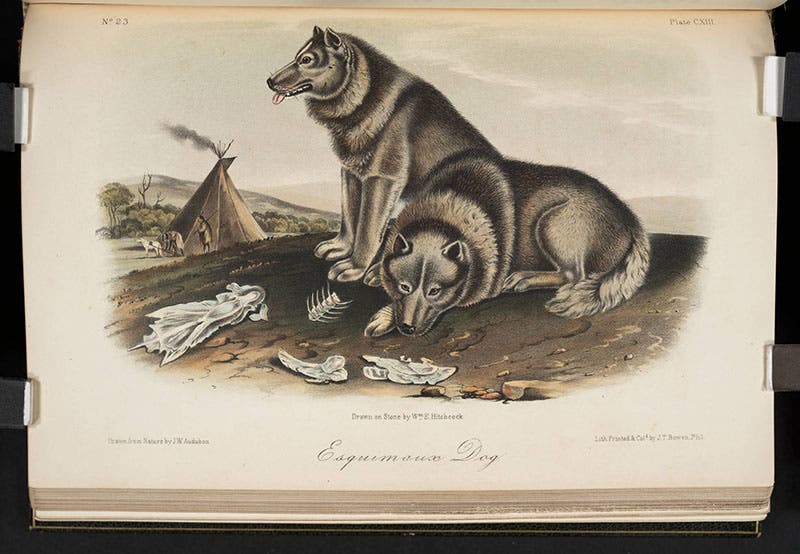Scientist of the Day - John James Audubon
John James Audubon, American painter of birds and mammals, was born Apr. 26, 1785. Born in Haiti, the illegitimate child of a French officer and his chambermaid mistress, who died when Audubon was a toddler, Audubon grew up in France, raised by his father's tolerant wife, and moved to the United States in 1803. He eked out a living as a store-keeper in Kentucky, but his life centered around observing, hunting, mounting, and drawing birds. After twenty years of travel and self-training, he headed to Edinburgh to find sponsors, engravers, and a publisher, and soon installments of the Birds of America began issuing from the press, the first in 1827, the last in 1838. Ever since it appeared, it has been the most sought after, and most collectible, work of natural history in existence. We have a copy of the 7-volume quarto edition (1840-44) in our Library, which we displayed in our Grandeur of Life exhibition in 2009.
With the success of Birds of America, Audubon decided to embark on a similar project, painting the quadrupeds of North America, collaborating with John Bachman of South Carolina. This is our subject for today. To procure specimens, Audubon traveled to St. Louis and hopped on a Missouri River steamboat. He managed to get as far as Fort Union on the North Dakota/Montana border, and then he returned. He did not see or collect all that many new mammals, but he does seem to have rekindled his passion for natural history painting, at the age of 58.
The folio set of Viviparous Quadrupeds of North America began to appear in 1844 and was finished by 1848. Bachman wrote much of the text, and Audubon's son John W. did many of the paintings. We have the octavo set, with the title Quadrupeds of North America (1849-54) in 3 handsome volumes. We displayed it as well in Grandeur of Life, with two further delightful images not shown here.
Audubon has taken a lot of flak for the anthropomorphic expressions of his birds and mammals, but he doesn't get nearly enough credit for the richness of his compositions. There is never anything boring about an Audubon painting. We show five selections from the Quadrupeds, all of which are gorgeous or charming or majestic, and sometimes all three. We see here the swift fox, the 9-banded armadillo, three little harvest mice, a polar bear, and an Esquimaux dog.
In 1858, Spencer Baird of the Smithsonian Institution named a rabbit after Audubon, Sylvilagus audubonii, or Audubon’s cottontail. We prevailed upon our resident artist and designer, Melissa Dehner, to provide us with a pencil sketch, which we happily offer as our lead image. Dr. William B. Ashworth, Jr., Consultant for the History of Science, Linda Hall Library and Associate Professor, Department of History, University of Missouri-Kansas City. Comments or corrections are welcome; please direct to ashworthw@umkc.edu.











